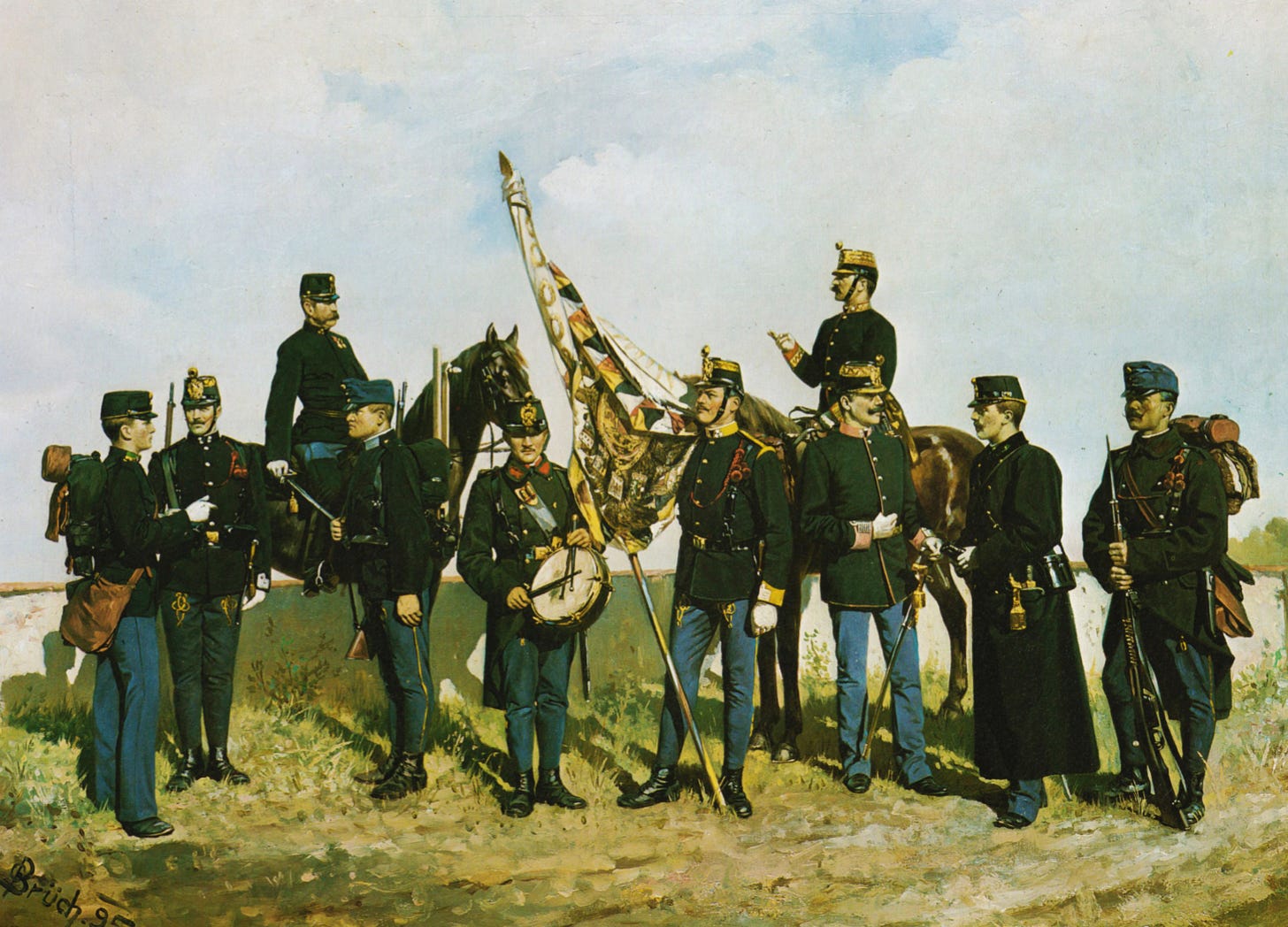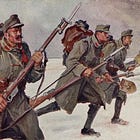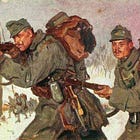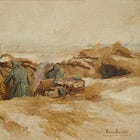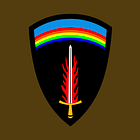Combat Orders (IV)
FMS D-0268
This is the fourth (and final) installment of a series that, taken together, contains the full text of a study written in 1947 by Lothar Rendulic, who served in the armies of the Habsburg Empire, the Republic of Austria, and National Socialist Germany. The first three posts in this series can be found below.
A change in the situation, especially if it results from enemy action, does not necessarily require in every instance a change in the decision and thus also in the orders. Such changes are certainly not called for, if the commander does not want to lose the initiative. In such instances, however, where the execution of his own plans can be effected, it will have to be made without hesitation. In the event of a rapidly developing tactical situation due consideration must be given to the fact that orders, if not completely so, are at least partially obsolete by the time they reach the subordinate.
The drafting of written (teletype) orders on the basis of the senior commander's deci- sion and on the basis on the situation places a heavy burden on the shoulders of the general staff officer. He must be able to properly comprehend a large number of strategic or tactical ideas or facts, to organize them, and, in using concise, yet clear and explicit language, to express them effectively in the shortest possible time. This qualification commonly known as the technique of combat orders was very much emphasized in training the General Staff Corps. The German General Staff Corps has done very good work in this field.
The mechanization and routine of general staff work has caused some, though relatively few general staff officers, to adopt a mechanical technique in formulating orders. I myself have served on general staffs up to the rank of colonel, and, in holding these assignments, have always opposed the mechanical element in orders, because this element renders an order impersonal and devoid of life. In mechanical orders the personality of the commander steps completely into the background. Yet, it is the personality of the commander which should be reflected in his orders.
Orders are usually drawn up by the operations officer (G-3) or the chief of staff. They were always highly qualified and particularly capable officers. In many instances, a good general staff officer knows how to project himself into the personality of his superior to such an extent that he can express ideas exactly as the superior would have done; soon he also knows how his superior reacts to certain situations, and draws his own conclusions as to what his superior considers important. Just the same, it is only in exceptional cases -- it could hardly be expected to be otherwise -- that both use the same kind of language. This latter consideration prompted me, particularly in difficult situations, to exert my personal influence rather frequently in formulating the most important points in combat orders; occasionally, I even drew up these orders myself.
Training in the technique of combat orders is likely to place too much emphasis on the formal aspects, and thus tends to indoctrinate trainees with the mechanical element in orders. We can combat this tendency most effectively, if we create strategic or tactical situations and use them as a basis for decisions, which in turn will serve as a basis for orders to be formulated. We must give the same attention to those hypothetical situations as we devote to the situations which we make up for purposes of instruction in tactics. Training in the drawing up of written reports in connection with strategic or tactical problems, which the student solves himself, is inadequate, because the student then incorporates his own decision into the order, and thus is not trained to work with ideas other than his own, a process which is considerably more difficult and important for a general staff officer.
The ideas on combat orders which I have presented in this study are derived from wartime experiences gained in assignments which took me from the position of division commander to the top military level. The few examples which I cited were taken solely from the division level of command, because those taken from a higher command level would have required too extensive an elaboration on the situation which formed the basis for the respective order.
Note: The paintings used to illustrated the articles of this series have passed into the public domain. The digital images of the paintings are made available by means of a Creative Commons license.
The four components of this article can be found below:
For more about the Foreign Military Studies program:
To support, share, or subscribe:
.



